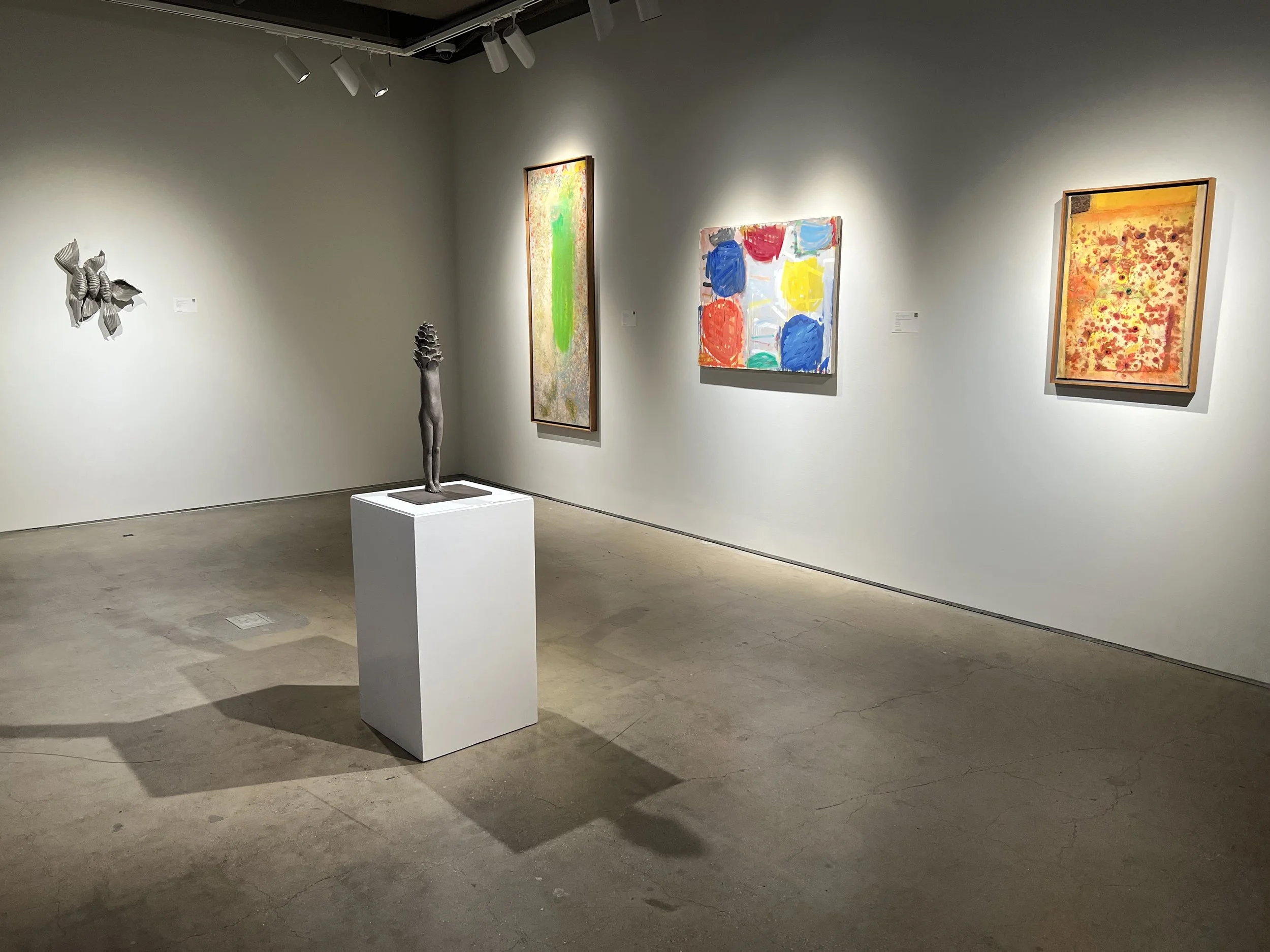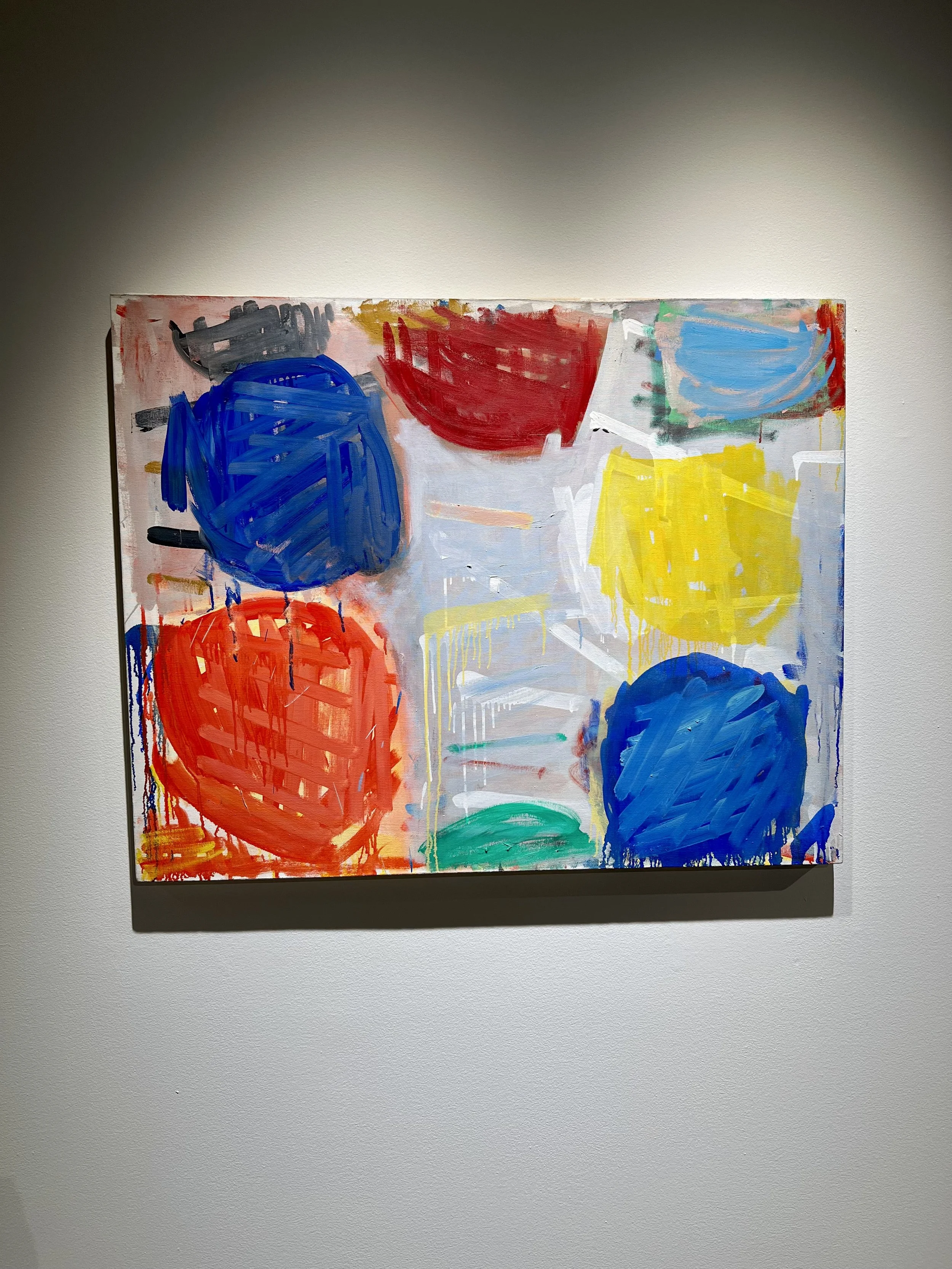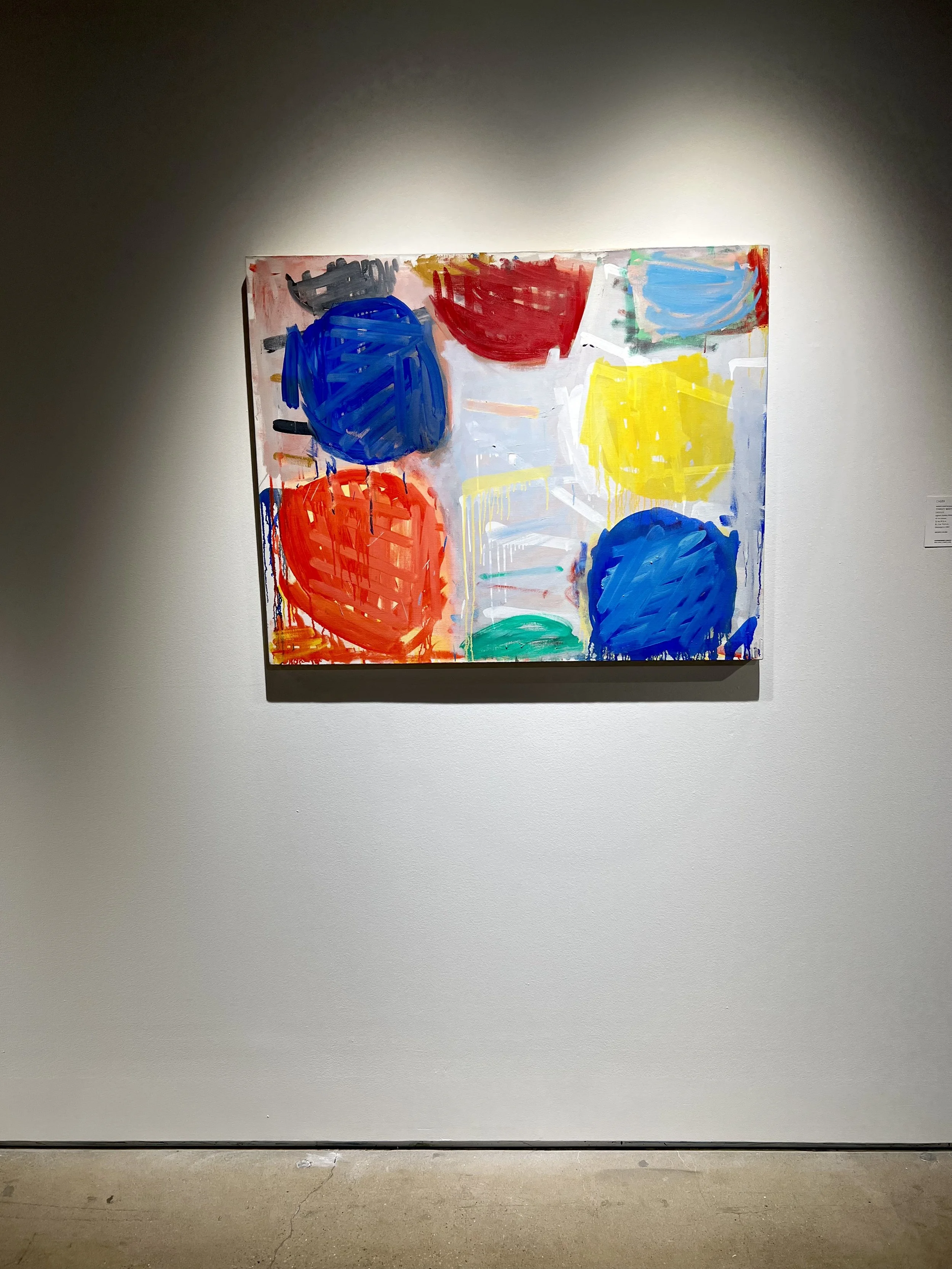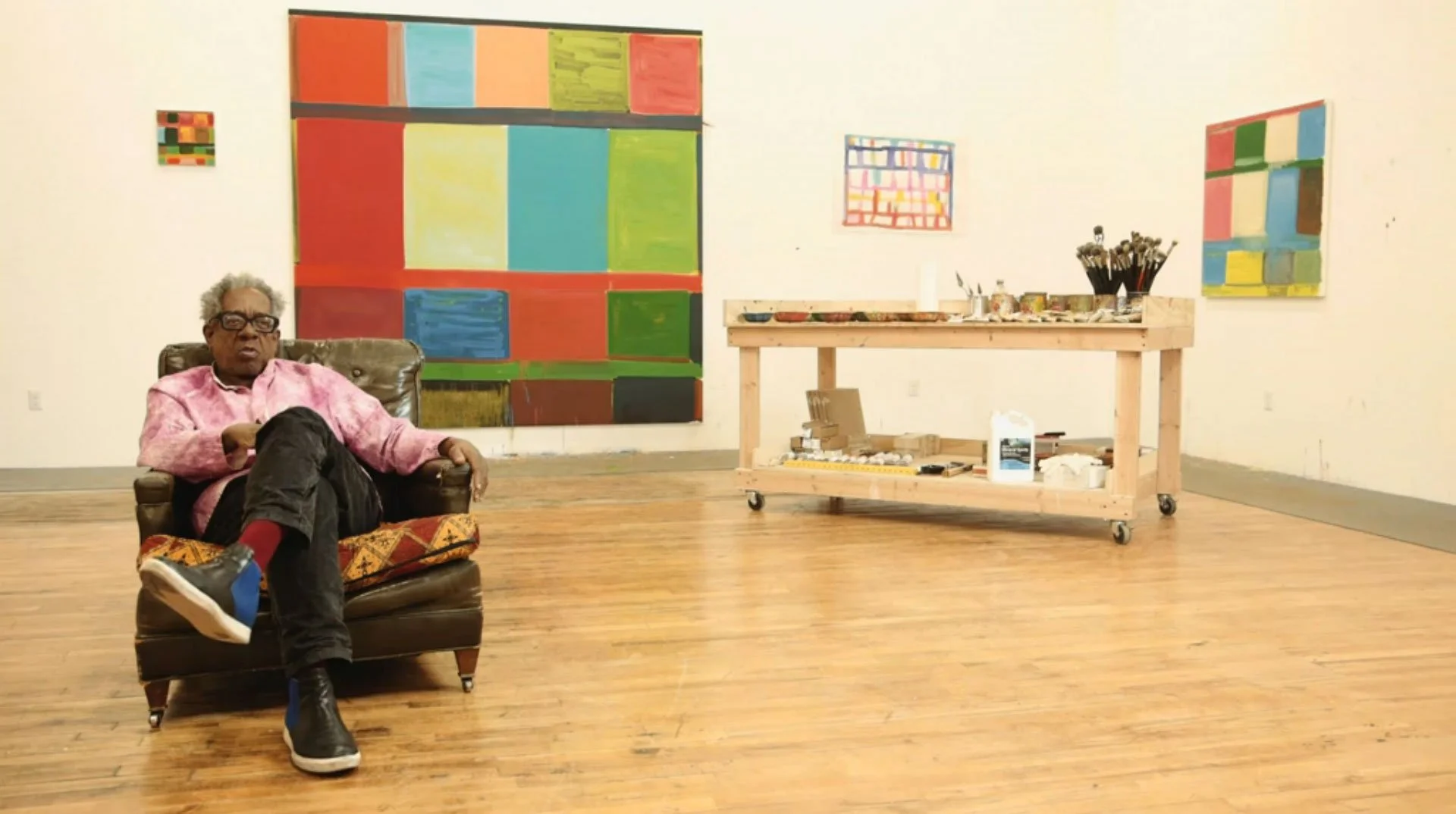Painting Sounds Like Jazz: Stanley Whitney in “Untitled” (1987)
Written by Nínive Vargas de la Peña for Sotheby’s Contemporary Curated. March 2022.
Known for his colorful grid compositions, Stanley Whitney revels in the creation of abstract forms of expression that are able to amuse his viewers' scrutiny. It was his early frustrations in finding a subject matter that captured his attention that took him into the exploration of color and space; this would turn into a lifelong profound exploration of these foundational elements like Donald Judd and Josef Albers had done before him. Whitney's obsession originated from the possibility of creating an illusionistic structure that contained space and air, while still working with pure fields of color. His now iconic solid grids emulate stable structures that remain rhythmic, spontaneous, and erratic in nature. Akin to unconstrained jazz improvisations, the artist explains his chromatic design as solely dependent on the color that came before it – opposing the traditionally calculated approach of field colorists in abstract expressionism, Whitney unsystematically executes each square, letting himself be surprised by every step of the process. The present work is a rare and historic example of the artist's work that captures Whitney's development of his iconic compositions and style.
Music was always there for me as a kind of rhythm.
Stanley Whitney
Vibrant
Structures of Color
Stanley Whitney. Untitled (1987). Private Collection.Inspired by the solidity of architectural structures such as the Colosseum in Rome, and Cezanne’s abstraction of landscapes into reticules of changing pigments, Whitney executes a solid matrix in his canvases that recreate colorful areas of vibrating emotion. An artistic proposal that takes as much from action painting as it does from color theory, Whitney creates condensed spaces of expression that nonetheless highlight the irregular and imperfect gesture of his polychromatic brushstrokes. The end result is a canvas that carries the weight of the filled shapes while still providing the viewer with the opportunity to immerse himself into their dynamic relationship.
Stanley Whitney. Untitled (1987). Private Collection.Using his famously square-shaped canvas, in Untitled, Whitney provides us with a cheerful landscape that captures and sustains our attention through the joyful relationship of its components. Early in his artistic explorations, Whitney toyed with the idea of drawing and color as interchangeable building blocks. In the painting, the elements appear to be inseparable– eliminating one, nullifies the other. Working in delimited patches of color that the artist filled with marked brushstrokes, this colorful reticule incorporates all of Whitney’s intital explorations of forms and space into what would become a lifelong proposal, reminding us that paintings are dynamic entities, to “be lived with, not just looked at”. You can find Stanley Whitney’s work in most major museums of contemporary art, and the latest work being represented by none other than the Gagosian group.





